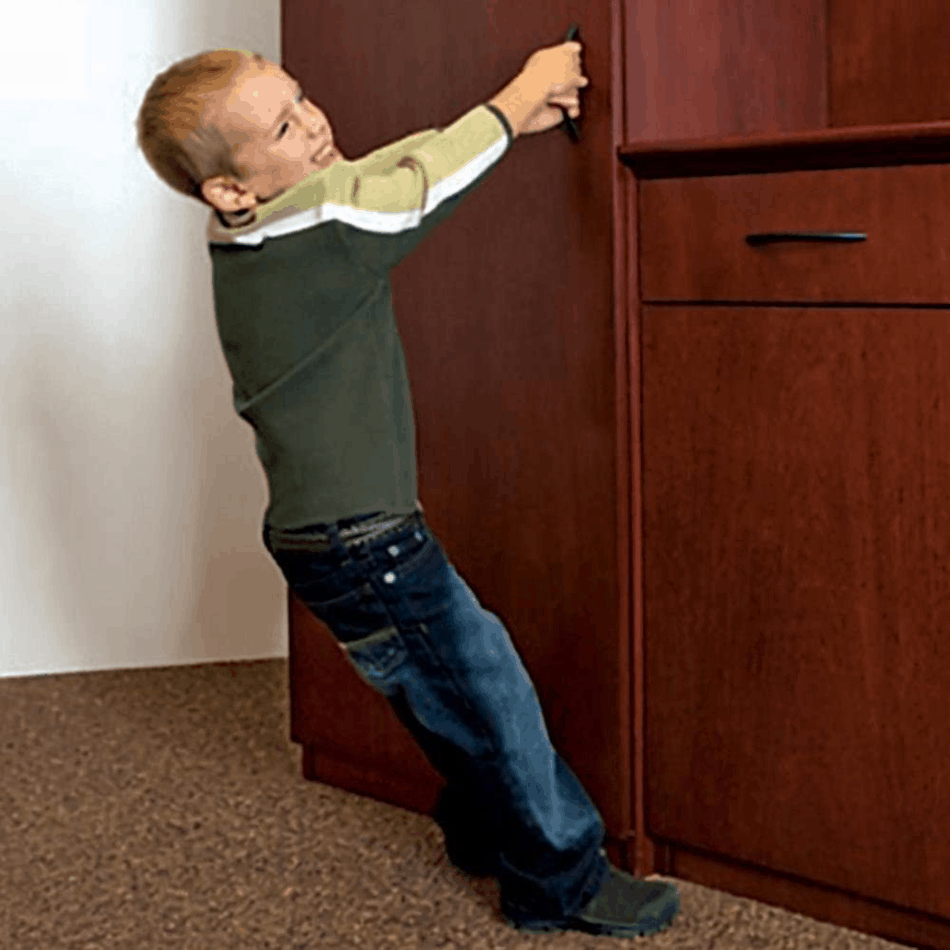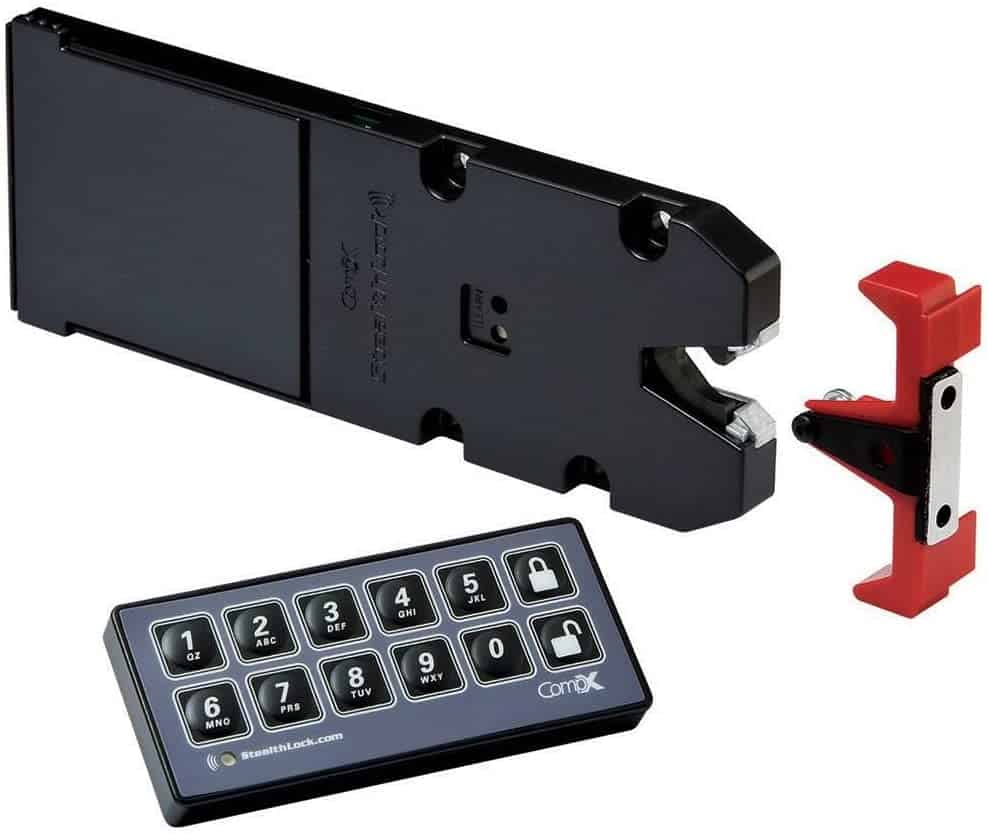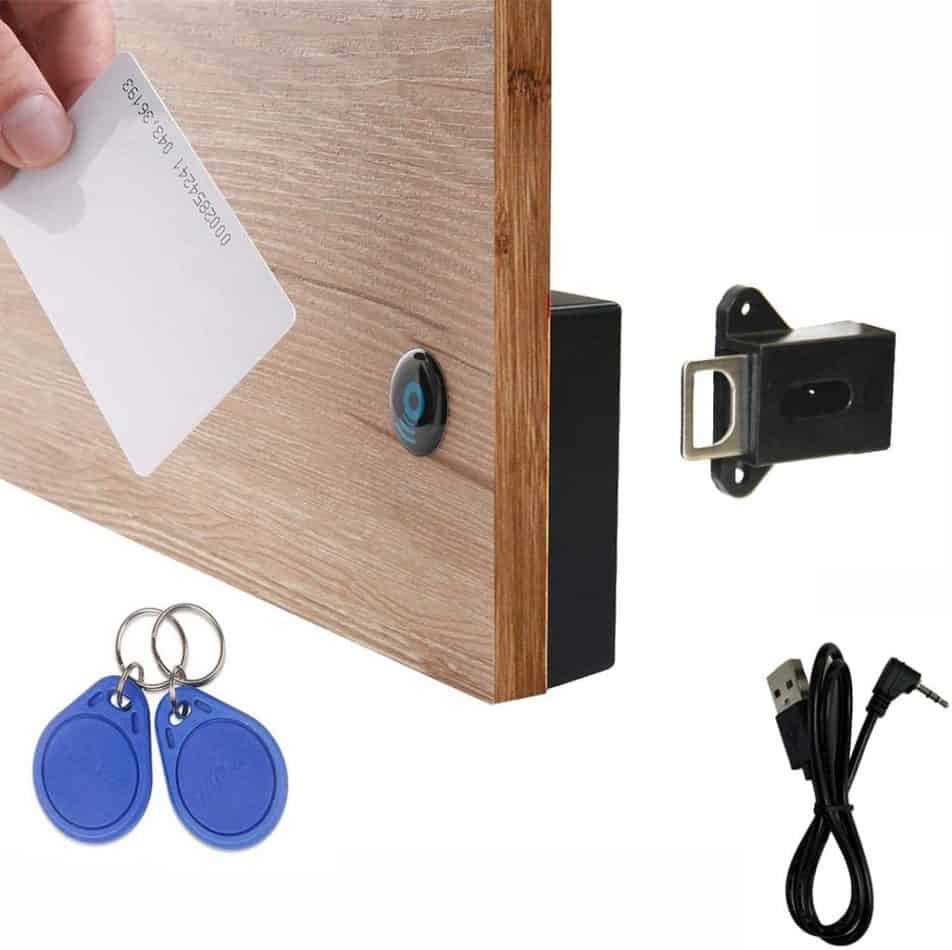You’ve got your home’s front and side doors locked up tighter than Fort Knox, but not so much your closet doors. Whether you store off-season clothes and shoes in your closet, more expensive valuables, or even a safe, the thought of a roommate, burglar, house guest, or your teenager getting in there makes you feel sick. You’d love to secure your valuables, but how do you lock your closet door?
To lock a standalone walk-in closet door, replace the doorknob with a Keyed locking one, whereas with sliding closet doors, you need a specialized lock that takes the sliding mechanism into account. You can use electronic locks with RFID or a keypad to secure wardrobes or cabinets where you keep your valuables.
This article will discuss how to secure all sorts of closet doors, including walk-in closets, sliding closets, and standalone closets and cabinets. From which tools you need to assembly steps and more, by the time you’re done reading, your closets will be a lot harder to get into!

Locking a Walk-in Closet Door
Using your large walk-in bedroom closet makes you feel like a bit of a celebrity. Whether you store off-season clothes and shoes in your walk-in closet, more expensive valuables, or even a safe, the thought of a burglar or your teenager getting in there makes you feel sick.
You’re looking for a security and privacy solution that doesn’t detract from the beauty of your walk-in closet yet keeps everything locked up. Here are a few options you can try.
Replace the Door Handle with a Locking Door Handle
Freestanding closets with one door are the least complicated of the closets we’ve discussed. You can use almost any door handle with a lock provided the new handle is the same size as the old one.
You can shop for locking standalone closet doorknobs for as low as $10 here. If you want a more complex security solution, you might buy a lock with a keypad. Keyless entry is always convenient, as you can get into your closet faster.
Here are the steps to follow to get your new doorknob installed.
Step 1: Start by taking off the mounting screws on your current non-locking closet doorknob. A Phillips screwdriver suffices for this, as does a slotted screwdriver. Hold onto the screws, as you may need them later.
When all the screws have come out, the doorknob is easily removed.
Step 2: Take your new latch assembly–which is part of the door’s locking mechanism–and put the entry lock into place. You want to make sure that the doorknob’s side with the key slot is outside the closet, not the inside.
Step 3: Use the included mounting screws to install your lockable doorknob. The screws should have a snug fit but not be too tight, or you could strip them.
Step 4: Add the striker plate that came with your doorknob. A striker plate goes on the doorjamb and keeps the door in place when it’s closed.
Locking a Sliding Closet Door
Perhaps the closet door in your home slides. You’re not sure what kind of locking system you can install that won’t interrupt the sliding mechanism and knock the doors off-track. Deadbolts won’t work unless you use a hook and lock style that attaches to the frame, but even then, you’d need a deadbolt per door, which is silly.
Fortunately, more convenient solutions exist, so let’s talk about your options now.
Sterling Sliding Door Keyed Lock 1068-26D
The Sterling Sliding Door Lock 1068-26D is another popular solution for homeowners. You will have to mount the lock into your sliding closet doors, so apartment dwellers who want their security deposit back might want to reconsider using this lock.
Make sure you keep the doorknob keys are handy but hidden away so your child or roommate can’t easily find them and open your sliding doors.
As another word of caution, if you buy a sliding door locking system outside of these two solutions, make sure it’s not one intended for keeping curious toddlers out of the closet. Those locks are rarely secure enough to prevent a grown adult from breaking into your closet.
Toledo Locks’ TDP-02S Sliding Door Lock
You can buy the TDP-02S Sliding Door Lock for around $35, which isn’t too shabby. The lock has a hardened steel bolt that is 1 3/4” to prevent lifting the door off its rails.
Use a Phillips head screwdriver and a power drill for installation. The fasteners needed for the job come with your purchase, so you can easily get this sliding door lock set up in 15 minutes. Besides its use for interior sliding closet doors, Toledo Locks says the TDP-02S Sliding Door Lock is appropriate for securing patio sliding doors as well as folding doors, accordion doors, swing doors, and windows.
Other Closet Locking Options
More locking options could work for a sliding door. Check the section below (wardrobes and cabinet) for more innovative ways that may work with your sliding door.
Locking a Wardrobe, Stand-Alone Closet Door, or Cabinet
If you have a wardrobe, a standalone (not the built-in variety), a cabinet, or a drawer where you keep your valuables, there are many options to make it more secure.
StealthLock
The first solution is StealthLock, an invisible, keyless cabinet locking system. From the home office to lockers and walk-in closets, you can lock them all up with StealhLock. How does StealthLock work? The lock uses radio frequencies via an included transmitter pad. The pad has a radius of 15 feet away.

When you activate the transmitter pad, you can lock or unlock as many StealthLock receiver latches as you have in your walk-in closet, and all at the same time. Each receiver latch mounts a half-inch from the drawer suspension clearance.
StealthLock operates on CR2032 coin batteries and AAA batteries (four of them). The transmitter pad will indicate when it’s running out of battery, so you’re never vulnerable to having your goods stolen. StealthLock does recommend only installing their hardware in environments that are 50 to 120 degrees Fahrenheit. Your walk-in closet would certainly be eligible.
WOOCH Electronic RFID Locks with Card and Wristband Entry
Another option you can try is the WOOCH Electronic RFID Lock. This RFID lock is programmable, so you can use one FOB (card or wrist tag) to unlock several cabinets. Keep in mind that the FOBs can work for a 1.5” or less thick wood cabinet.

The best part is the easy installation that does not require power tools or drilling. You also get up to 15,000 openings from 2 x AA batteries. Unlike keys or keypads that need a free hand to open, the WOOCH RFID wrist FOBs allow you to unlock your closet without touching. Now, you can enjoy greater peace of mind and keep your valuables safe from your roommate or kids.
Closet Space Privacy vs. Security: Understanding Doorknob Security Ratings
Closet doors are flimsy by design. They are lightweight and often made from non-solid wood that can be easily kicked-in. The purpose of locking your closet is more for privacy and to fend off prying eyes, not to stop burglars. A heavy-duty lock rated for high security is probably an overkill for a closet door. Choose a reasonable lock that is within your budget.
The Builder’s Hardware Manufacturers Association or BHMA issues grades on all residential door hardware. Besides security, BHMA also rates this hardware on finish quality and durability.
If your doorknob only has a C rating, it’s somewhat secure but could be better. B grades are passable, and A grades are even better, but the best is AAA.
The American National Standards Institute or ANSI also grades doorknobs. A knob will receive one of three security ratings: Grade 1, Grade 2, or Grade 3. A Grade 1 doorknob can withstand ten blows before breaking, a Grade 2 knob five blows, and a Grade 3 knob only two blows. Whenever you can, make sure your doorknob is ANSI Grade 1.
Conclusion
Locking a closet door isn’t as common as securing your front or side doors, but the task is doable should you want to. A regular locking doorknob is best for standalone walk-in closets, whereas a specialized lock with a pin bolt is a better fit for sliding closet doors. Specialty electronic locks can be used to secure cabinets and wardrobes where you keep your valuables.

